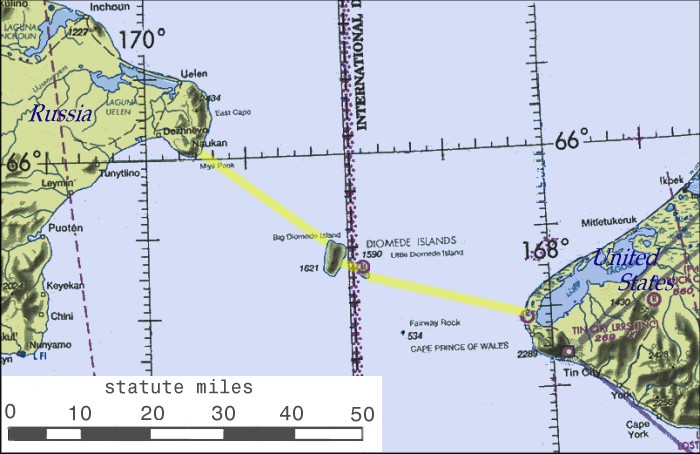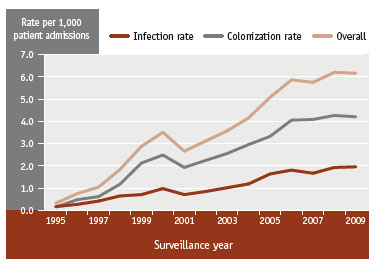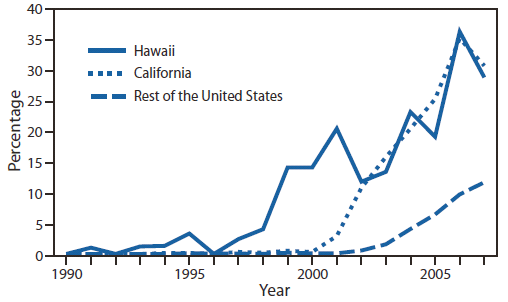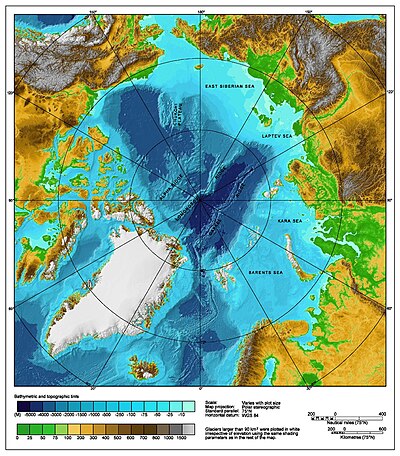If your not familiar with why climate change is the most pressing issue humanity as ever faced then please read this first.
There are 2 related issues in the Arctic. One is the release of carbon from the permafrost that is dealt with here. The other is the release of carbon from the sub-sea sediments of the Arctic ocean which is what this article deals with. This is now a proposal in the MIT CoLab.
As mentioned elsewhere once the methane of the arctic circle begins to be released then global warming will accelerate dramatically. The effects will be more devastating than anything man has known in its history.
To review the situation here is Dr. Wadhams
I should make it clear that I consider this to be a line of last defence, and I would dearly hope that it would never be required. That said if it were needed I would like to know that it had been very carefully thought through, and that is why I have posted it now.
This would be a solution that would require no new technologies, just the slowing down of water flows. At the end of this article I will provide supporting evidence that demonstrates this would work.
Here is an image of the Arctic circle courtesy of Wikipedia, at the top of the image the small gap between Alaska and Russia is the Bering Strait. The thin dark blue area is the Fram Strait. The white mass is Greenland.
As temperatures begin to rise the Greenland ice sheet will begin to melt. The Greenland ice sheet contains 2,850,000 cubic kms of ice. That will be a significant amount of cold water being dumped into the sea. It's enough cold water to raise the world's oceans 7m. However, it will not distribute evenly. Fresh water doesn't quickly mix with salt water. The rest of the oceans are denser, and warmer. That denser water is not going to give way easily. The ice sheet melt will be blocked from going south. The cold water would flow towards the Arctic first. The immediate effect of that will be to cool it.
2.8 million cubic kms of cold water will flow into a place with shallow sea beds. The total volume of the Arctic ocean is 18,750,000 cubic kms. That is a replenishment of 15%. In a lake cold water goes to the bottom (called the hypolimnion). In terms of the methane hydrates that is where it is needed most. However, that is really just a delay. The sea beds are shallow and without an ice cover the water will begin to heat up.
There is another effect of the melting Greenland ice sheet. There is an ocean current called the Thermohaline circulation that brings warm water up from the tropics. It is the reason why England does not experience the temperatures of Siberia. The cold water from the melt will cause a slowdown of this circulation by blocking the upwelling stage off the southern tip of Greenland. A disruption of the circulation would slow down the warming of the arctic. Again another delay, but not a fix.
Now, what if the circulation could actually be shutdown through terraforming? It would be perhaps the greatest engineering feat mankind has ever done, but the benefits would be its survival.
2 changes need to be made;
Blocking the Pacific inflows
The Bering Strait Sea Wall
The Bering strait must be separated from the Pacific ocean. This could be achieved with a low tech sea wall. The effect would be to isolate the Arctic ocean from warm water coming from the Pacific ocean. During the winter, cold Alaskan winds blow over the Chukchi Sea, freezing the surface water and pushing this newly formed ice out to the Pacific. If this movement was stopped by a land bridge, that cold water would have a chilling effect on the rest of the sea. During summer gates could be opened at the top layer allowing warm water out. There would be a positive flow because of the land runoff feeding the Arctic ocean.
It would not be difficult to build a sea wall there. The answer is in the terrain. Both on the Russian side and on the Alaskan side are mountains so there is plenty of foundation material. In addition the Bering Strait is extraordinarily shallow. So shallow in fact that there is already a proposal to tunnel under it.
http://inhabitat.com/russia-green-lights-65-billion-siberia-alaska-rail-and-tunnel-to-bridge-the-bering-strait/ The strait averages 98 to 164 ft (30 to 50 m) in depth and at its narrowest is about 53 mi (85 km) wide. That is nothing for a sea wall. The sea bed was exposed previously in mankind's existence (see below) why not again?

The argument could be made that this would result in ecological damage, however, more damage will actually result from waiting. "Mooring data indicate the Bering Strait throughflow increases ~50% from 2001 (~0.7Sv) to 2011 (~1.1Sv), driving heat and freshwater flux increases.(link)
The changes are actually happening now, at a very fast pace. Closing it would actually do more to preserve the ecosystem than continuing with the current state.
Finally, the ecological damage coming from this becoming a shipping route will add to the growing problem. (link)
As part of this solution the sea wall would require sluice gates. The gates would allow fine tuning of the water temperature for those concerned with the possibility of creating another ice age. However, that scenario would be very unlikely given the current levels of greenhouse gases in the atmosphere. A byproduct of the sea wall would be phenomenal hydroelectric generation (more below).
Blocking the North Atlantic current
There are 2 methods by which the North Atlantic current could be slowed or even stopped from entering the Arctic.
"In the depth range of 150–900 meters is a water masses referred to as Atlantic Water. Inflow from the North Atlantic Current enters through the Fram Strait, cooling and sinking to form the deepest layer of the halocline, where it circles theArctic Basin counter-clockwise. This is the highest volumetric inflow to the Arctic Ocean, equaling about 10 times that of the Pacific inflow, and it creates the Arctic Ocean Boundary Current.[17] It flows slowly, at about 0.02 m/s.[15] Atlantic Water has the same salinity as Arctic Bottom Water but is much warmer (up to 3 °C). In fact, this water mass is actually warmer than the surface water, and remains submerged only due the role of salinity in density." wikipedia
The Fram Strait
The underwater gully running through the Fram strait needs to be blocked. An underwater sea wall is needed from the Belgica Bank to the Yermak plateau. The effect would be to stop the West Spitsbergen current that brings in the Atlantic current.
Faroe Islands to Scotland shallowing
Another option is to shallow the waters from the Faroe islands to Scotland. Rather than allowing the North Atlantic current to continue to the Fram Strait block it at the Faroe Islands.

In order to shallow the sea bed, or the gully, I would propose an artificial reef. We have taken trillions of tonnes of metal from the Earth's rocks, why not give some of it back? Take the derelict artifacts of mankind, clean them of pollutants and then scuttle them. The result would be a huge area of sea life completely protected from fishing legal or otherwise. You cannot dragnet over a sunken ship. It would be a haven for sea life the likes of which could not found anywhere else in the world. Derelict ships could be towed, other artifacts could be barged.
If you think that this would result in environmental pollution then look at these;
Artificial reefs actually generate business.
Details
Looking at the image of the current flows and depth profile here;
You notice the vast majority of the N. Atlantic current goes to the East of the Faroe Islands, not the West, as that is hindered by a southerly moving East Greenland Current, and also because it is shallow. So the critical point is to the west. Looking at the western depth profile between Faroe Island and Scotland there is a narrow gully that is the primary transport for the Atlantic current. It goes from 60.664433, -6.020508 to 59.968072, -5.009766 (~100km). Shutting down that gully would block the predominant flow.
A deep sea barrier at the southern tip of the Faroe-Shetland Channel (FSC)
would force the Nordic Deep Water inflow up. This is fresh water which would add an additional restraint to the North Atlantic Current (NAC) surface water flowing North. It is not feasible that this would stop the NAC however, it would tend to redirect it and reinforce the ThermoHaline Circulation (THC) east to west off the southern tip of Greenland.
So if the reef height was 1000m from the floor, and the reef was 1000m wide, and it was 100km (actually only 56km) that would give 100 million m^3.
Not all of this has to be blocked. There just has to be sufficient structure to allow natural processes to eventuate. In particular cold water corals. They can survive at 4C which, I believe, is well within tolerance for this environment.
They only grow slowly but they can be very extensive;
The largest reef yet discovered, off the coast of Norway's Røst Island, is 40km long and 2-3 km wide. Another Norwegian reef has grown to a height of 165m above the surrounding seabed.
So I think it is best to aim for an environment that is a catalyst for nature to take over. In that case, periodic spires of scuttled ships would act as posts where the coral would gradually fill in the gaps. But the reality is that coral grows slowly (5-25mm a year).
What would it take to plug this gully? Current estimates are from 200 to 600 ships are sent to the wrecking yards each year (let's say 400 avg). I am going to calculate based on the size of a small Panamax ship (294m * 32m * 12m) * 400 = 45,158,400m^3 per year
All the ship wrecking for 2 years = 90 million m^3 that has the gully blocked, and would effectively throttle the N. Atlantic current into the Arctic sea. This combined with a closure of the Bering Strait would result in a positive outflow of fresh water from the Arctic. The Arctic has a yearly positive inflow of 2890 km3 of freshwater from rivers (here). This extra water would flow out south into the Atlantic, the warm salt water going north would be blocked.
The combined effect
The combined effects of blocking the Bering strait and throttling or stopping the North Atlantic current, would be numerous;
- The inflows into the Arctic would be colder fresh water 2890 km3 coming from rivers, glacial and ice sheet melt
- The Arctic ocean would become much less saline
- The water would be less dense.
Those effects would mean;
- Increased ice coverage in the Arctic. Saltwater has a much lower freezing point than freshwater does. Therefore ice would form much more readily.
- The ice would increase the reflection of the suns rays (albedo) which would decrease the temperature of the Arctic ocean.
- A slowing of the Thermohaline circulation flows into the Arctic. The less dense cold water would be a net outflow from the Arctic region via the Bering Strait hydroelectric dam.
The result would potentially be the beginning of a new glacial period, at least in the Arctic. Without warming from the Atlantic water, temperatures would severely plunge.
If we wait to implement this there are some potentially huge costs ;
The first is the the positive feedbacks currently activated will become too established to reverse. The feedbacks are many but, in particular, would be the oceans becoming anoxic.
The second is that the climate changes that are already in the pipeline, and the resulting environmental degradation are going to force a mass migration Northward. The implementation of this proposal would probably result in severely dropping temperatures. The people would be caught with no infrastructure and now freezing temperatures.
There is evidence that this approach would in fact work. This article (based on a paper released in Proceedings of the National Academy of Sciences) states the improbability of the North Atlantic current being shutdown and causing an ice age, while the Bering Strait is open. Close it and the dynamics change very rapidly. The Bering Strait has actually been closed before, by nature, and it lead to dramatic climate change as I am predicting. In fact the Bering Strait was closed a mere 14,000 years ago. As such, it is obvious this would have no detrimental effect on the ocean. So this is not an unnatural solution to a devastating problem.
There are virtually no risks associated with implementing it. There would be a fear that the water in the Arctic would become more stagnant which may lead to anoxic events. However, that won't happen. Look at the profile of Mediterranean sea. In addition, it would be balanced by the decrease in water temperature which would hold more dissolved oxygen. Finally, the Bering strait was closed only 14,000 years ago this was a time when flora and fauna was thriving.
Hydroelectric power
There is another benefit, and it is extremely important. The pressure difference between the Arctic sea on one side of the Bering Strait Wall and the Pacific ocean on the other, would be colossal. That is clean potential energy. The beauty is that it could be done, with little, if any negative consequences.
The flow rate of the water moving through the Bering Strait is roughly 1.4 x 10^6 m^3/sec ( http://aslo.net/lo/toc/vol_11/issue_1/0044.pdf). This net northward flow is driven by the difference between sea level in the North Pacific and Arctic Oceans (0.4–0.5 m). This is a hydraulic head (.5m) for power generation, the pressure is most definitely there.
So .5m head and 1.1Sv gives us (as potential power)
P = 1,000,000m^3/sec * .5m
P = ~ 4.4 gigawatts
http://www.pmel.noaa.gov/pubs/outstand/stab2529/northern_shelf.shtml
http://onlinelibrary.wiley.com/doi/10.1029/JC092iC07p07097/abstract
So a hydroelectric plant is certainly feasible. In context, the 3 Gorges dam in China can generate 18Gw.
By building the Bering Wall no lands would be flooded, we would get clean electricity, and the Arctic sea ice would be restored. Most importantly, between the Bering Wall and the throttling of the Thermohaline current, the methane hydrates would be preserved. If we let the situation with the methane hydrates accelerate, we will end up with the oceans dying. The flow on effect of that is the reduction of the very air we breath.
Nothing in the history of mankind could be more important than this. Time is short, the following image is of temperature anomalies moving from the Pacific into the Arctic sea. If this continues unabated the methane hydrates will melt. The result will be huge emissions of methane and runaway climate change.
Azolla
As mentioned the water will become less saline. Once the surface water gets to 10ppt (currently 30 ppt), Azolla can thrive. This is very important.
The Azolla event occurred in the middle Eocene epoch,[1] around 49 million years ago, when blooms of the freshwater fern Azolla are thought to have happened in the Arctic Ocean. As they sank to the stagnant sea floor, they were incorporated into the sediment; the resulting draw down of carbon dioxide has been speculated to have helped transform the planet from a "greenhouse Earth" state, hot enough for turtles and palm trees to prosper at the poles, to the icehouse Earth it has been since. (link)
The draw down effect of Azolla 49 million years ago has been estimated to have reduced the atmospheric concentration of total of 2850ppm CO2, and in the process brought on an ice age. Azolla is an amazing plant and its ability to control methane in rice paddies, may be just what is needed now. Should Azolla thrive again in the Arctic it could be harvested en masse and provide a significant energy source through Biogas. Some species of Azolla can handle -5C so temperature will not be a limiting factor (link). Salt is.
The cost of waiting
It is ironic that if we started now, we could throttle the Thermohaline Circulation gradually and the transition would be smoother. If we wait and block it in a desperate panic, the climate shift could be violent. While there are many variables involved it could conceivably happen like this;
- CO2 levels remain in the atmosphere for 40 years.
- Methane remains in the atmosphere for 70 years.
- Much of the population would have had no choice but to migrate North into an area of little infrastructure.
- Slowing the THC initially does nothing for the climate, because of the current Green House Gases (ghg) in the atmosphere. Society is desperate, so the THC is shutdown.
- Civilization has reduced its CO2 emissions to near zero through change or collapse.
- Gradually it's effects are presented, methane emissions stop.
- A period of stasis
- The Arctic begins to chill
- The Arctic begins to freeze again. Albedo (reflectivity) increases, with no black snow.
- Now through the Mpemba effect, the water begins to freeze at a rapid rate.
- Albedo now increases on land as well.
- Now the population must migrate South into an area that has seen no infrastructure maintenance in 2 generations.
If you have any contributions or rebuttals please comment. It is important that all the issues are considered.













